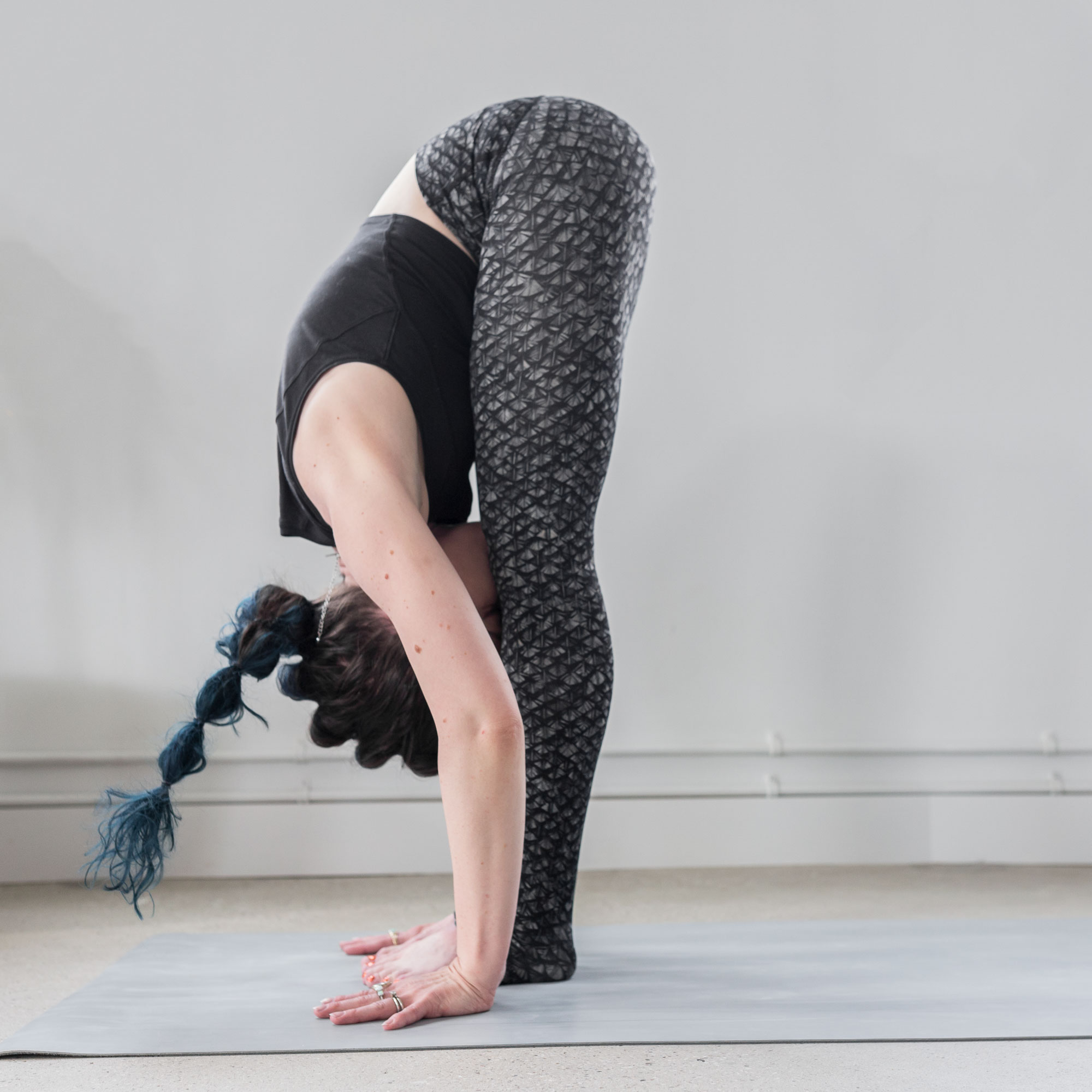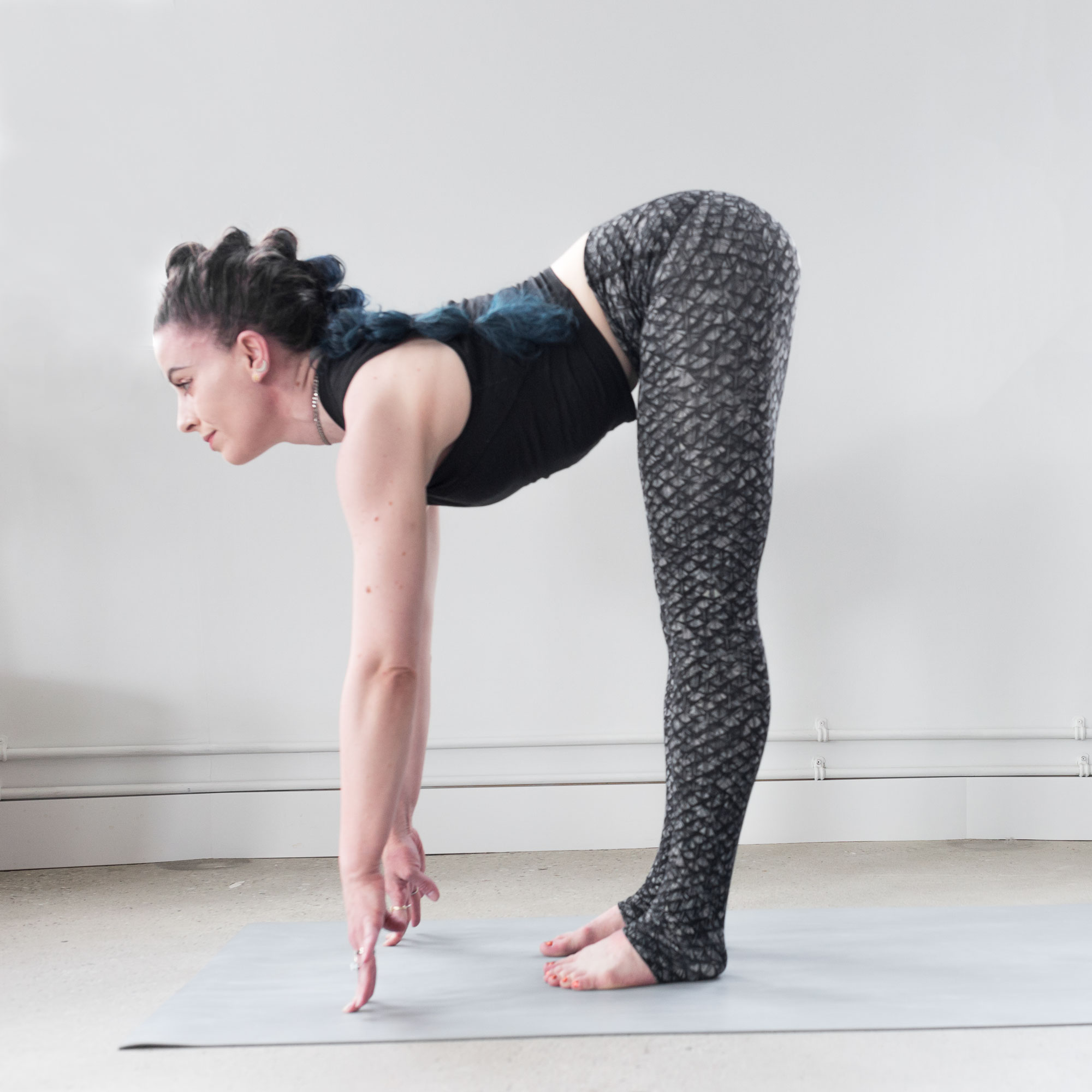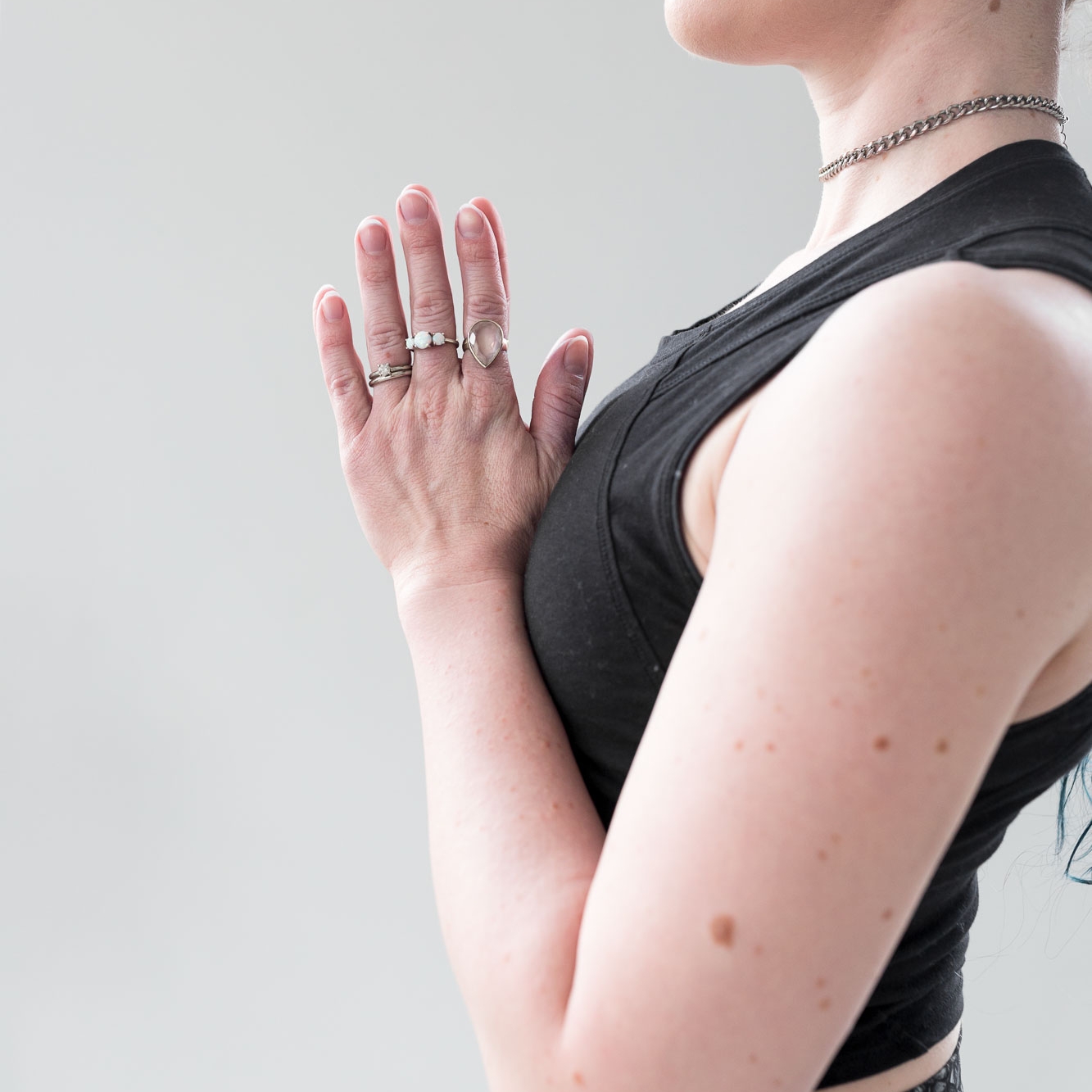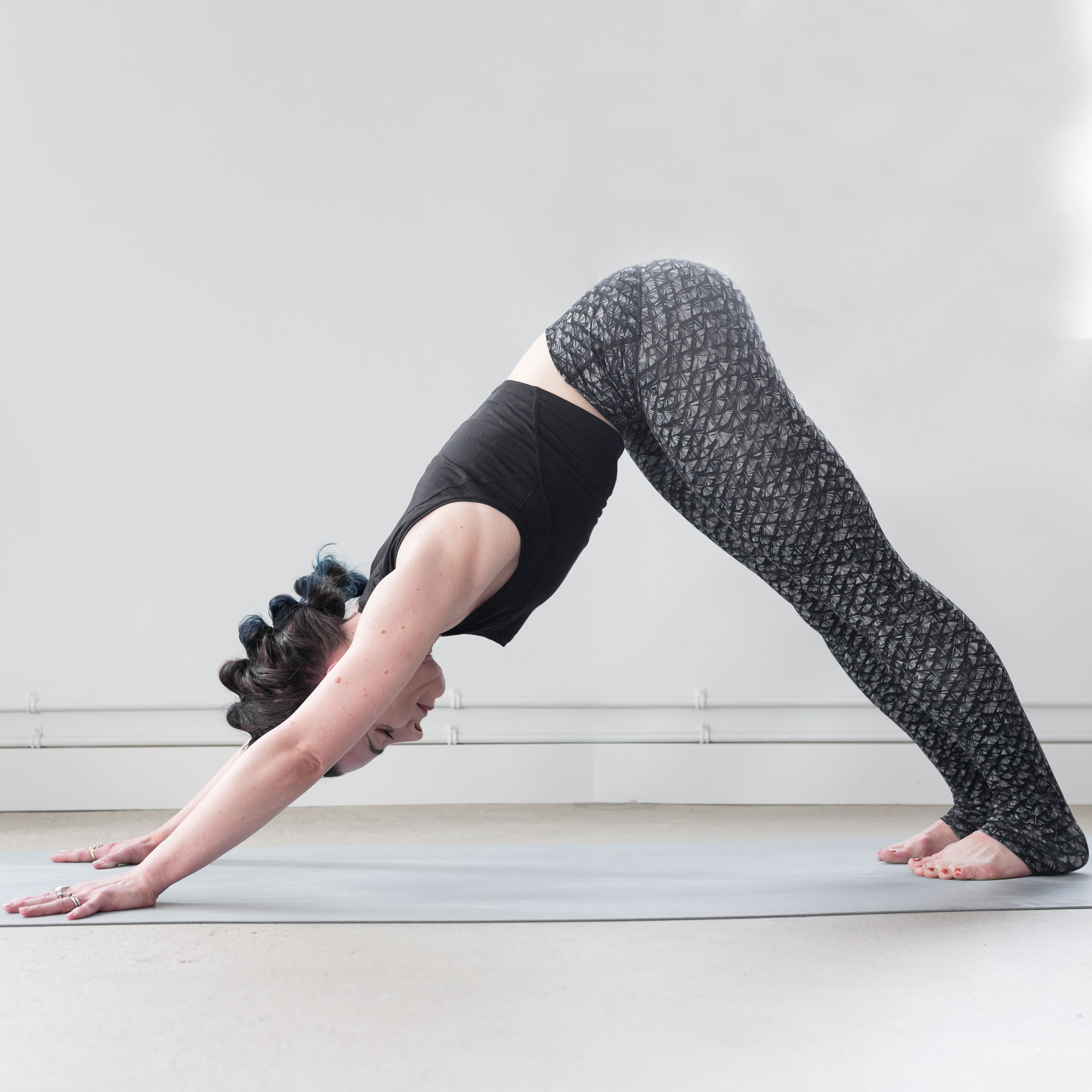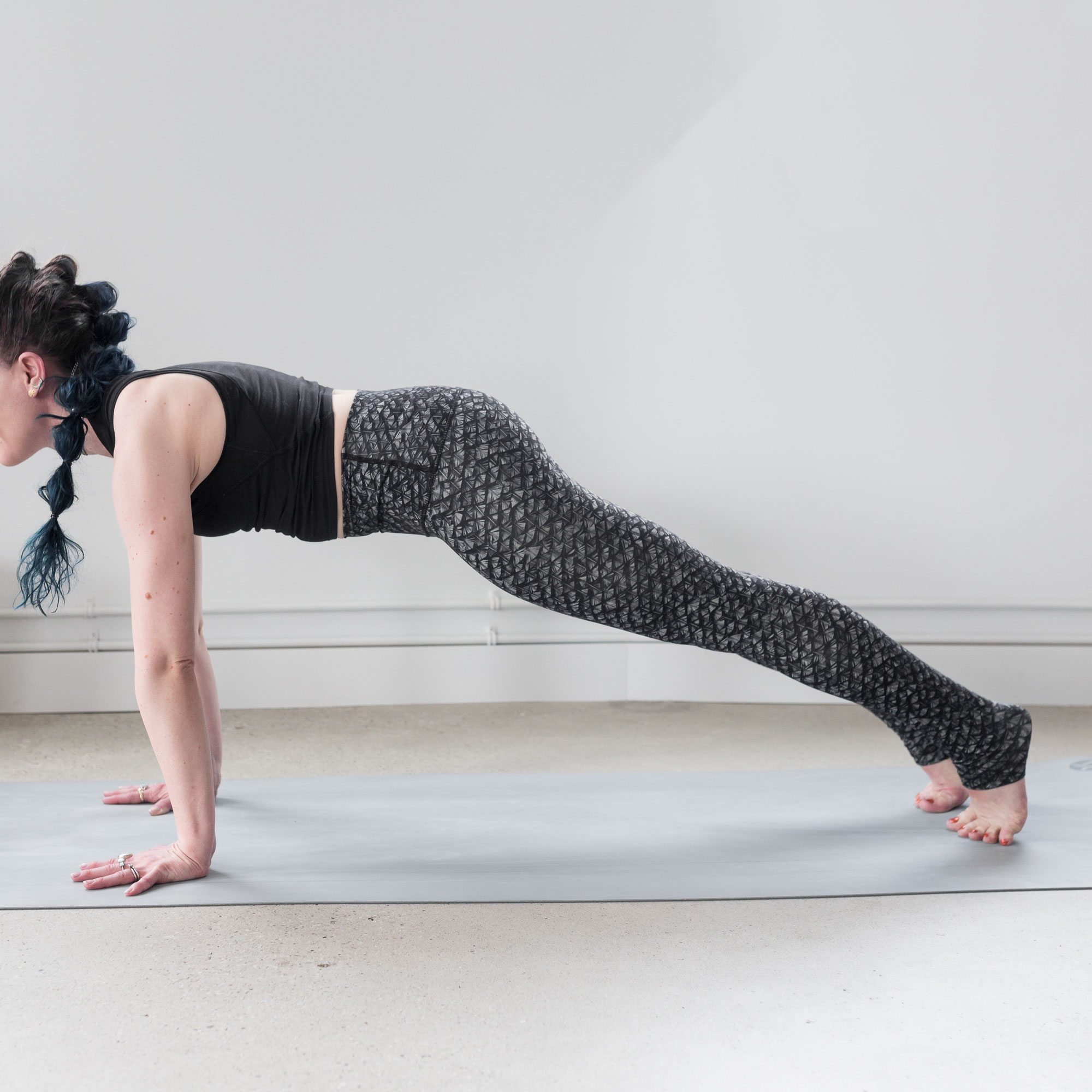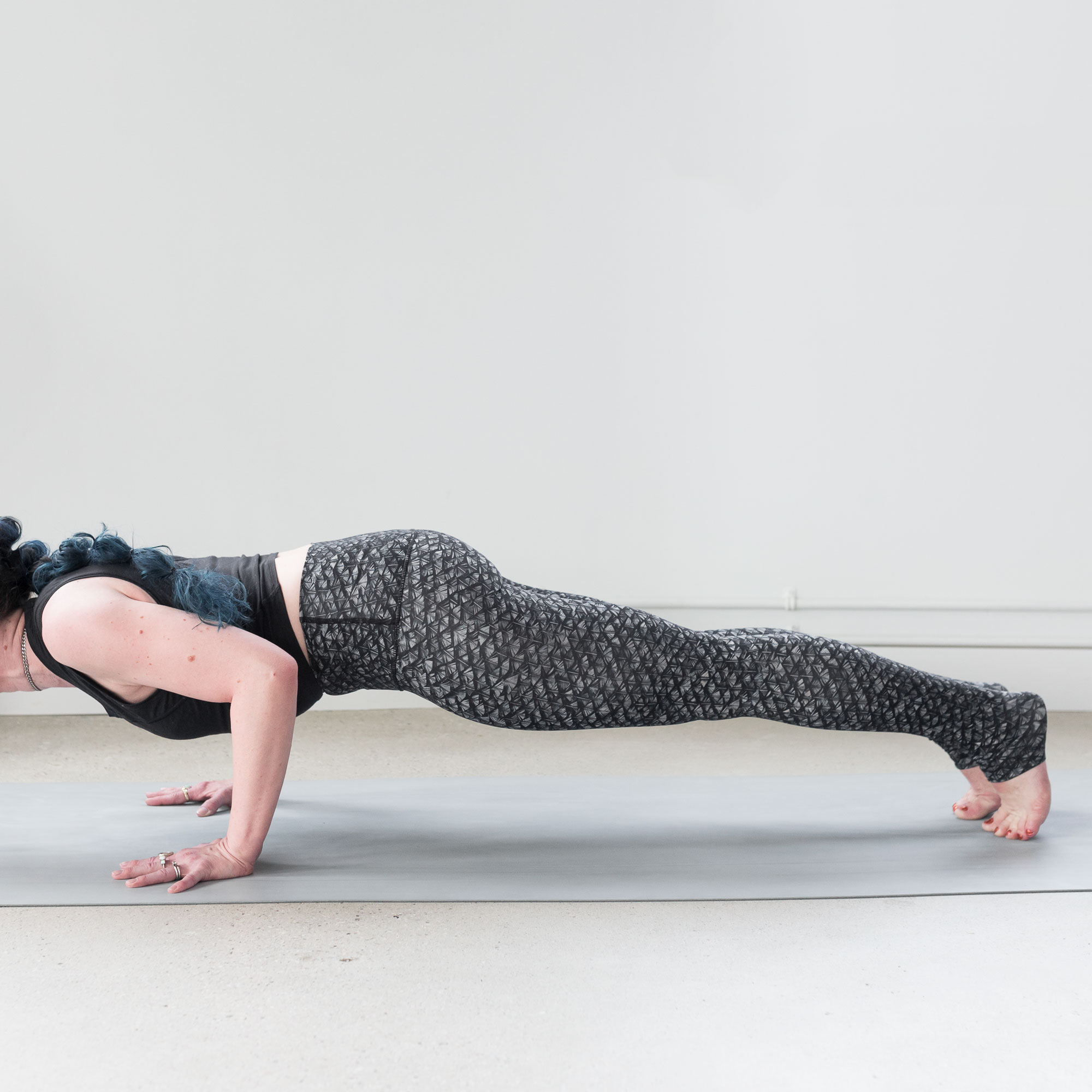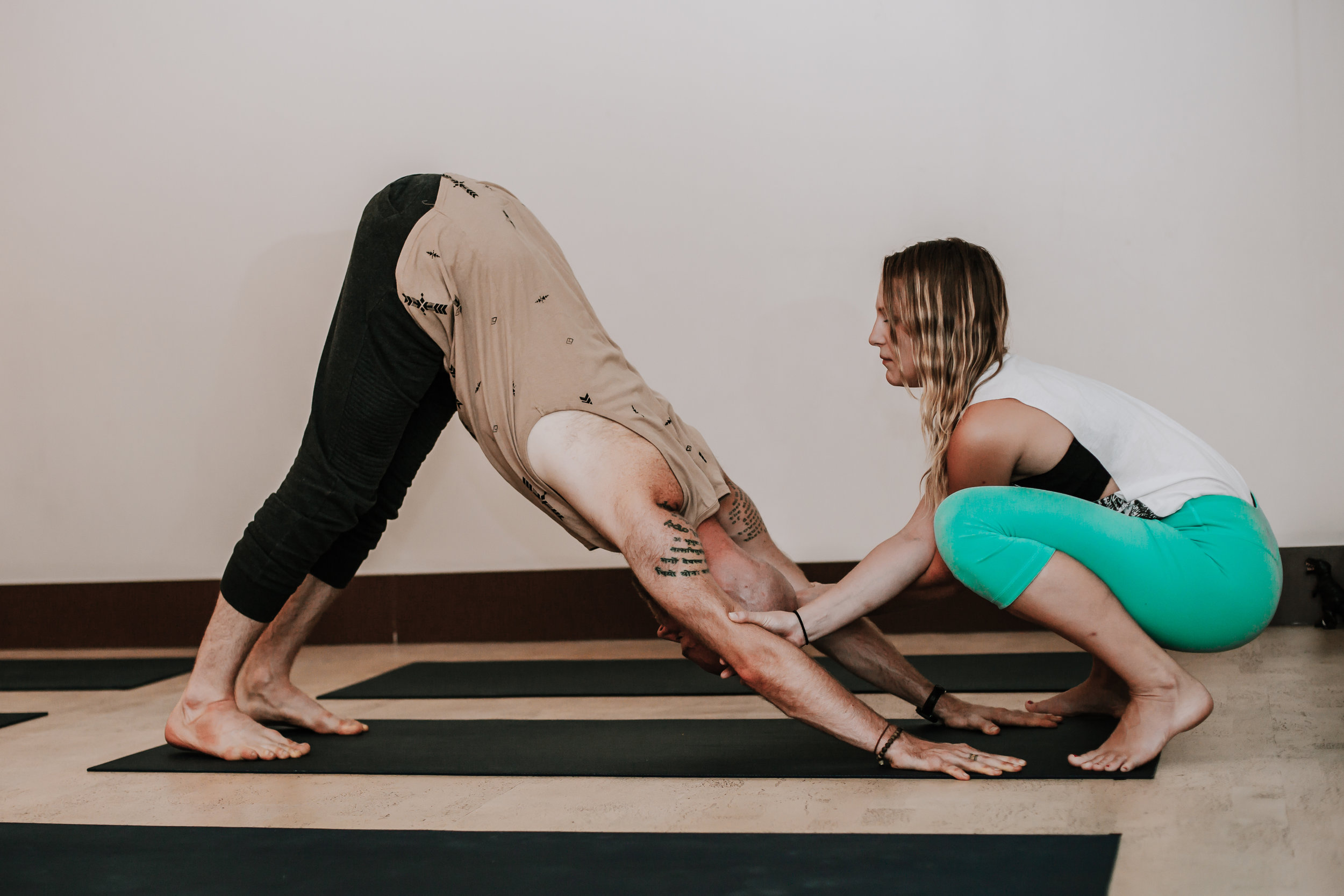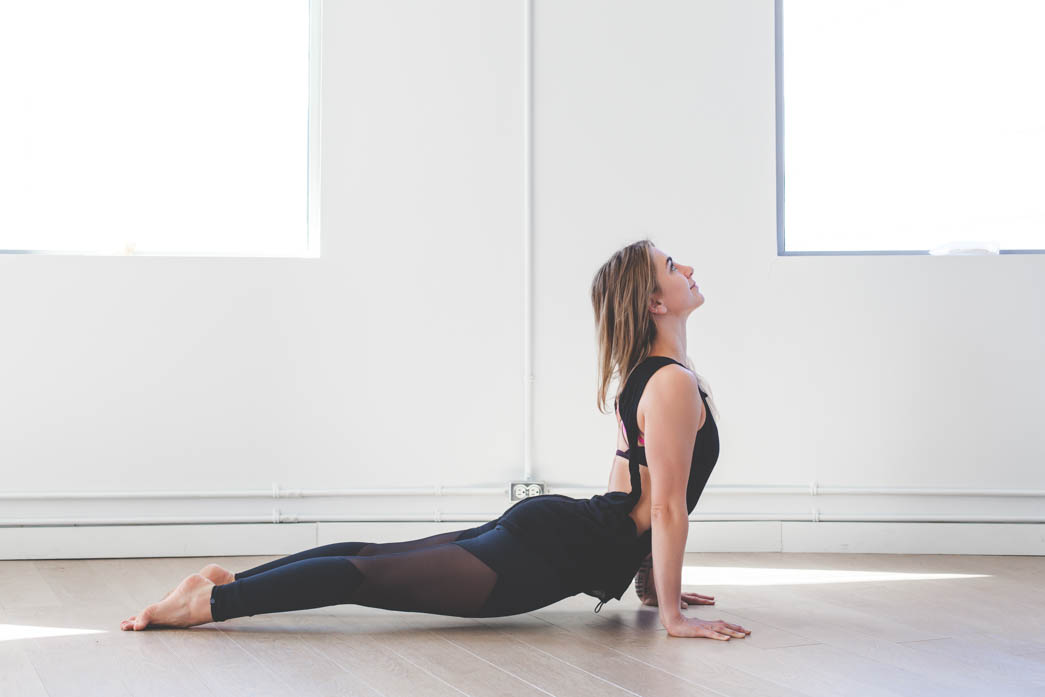Break It Down: Vinyasa
VINYASA, TRANSLATED:
“To move or arrange in a special way”. It can also mean “movement” or “position of the limbs”.
Written by Kristine Owen Wood | Photographed by Caitlin Varrin
What is Vinyasa?
One term, many meanings!
Vinyasa, translated:
“To move or arrange in a special way”. It can also mean “movement” or “position of the limbs”.
Vinyasa, the style of yoga:
refers to a strong, dynamic, continuously flowing practice which aims to seamlessly integrate movement and breath. a.k.a, ‘Moving Meditation’: The relative quick pace of Vinyasa Flow with its emphasis on matched breath/movement and fluid transitions between poses allows many practitioners to relax habitual thought-loops and enter an embodied “flow state” of being. Same same but different? Styles of yoga at Yogalife which are synonymous with, derived from, or closely related to Vinyasa include “Ashtanga”, “Rocket”, “Sattva”, “Flow”, and the “Yang” portion of “Yin/Yang”.
Why break it down?
Vinyasa classes tend to move more quickly than slower styles like Hatha and in order to “keep the flow”, might not always provide as much in-depth alignment instruction. This can sometimes result in confusion for newbies! It can also create a situation where the most often-repeated set of movements are amongst the least fully-understood.
Potency of practice:
Developing a clear understanding of how to approach Vinyasa for your body, through your body, is essential for unlocking the full potential of your “flow state” experience. Below is a step-by-step guide to aid you in this journey!
Vinyasa, the flow of movement:
“Vinyasa” can also refer to a very specific cycle of poses that repeats throughout any of the above-mentioned class styles.
Rise & Shine!
Vinyasa will often appear first in the course of opening Sun Salutations as a method of evenly warming up the body.
The groove that binds us:
Subsequent Vinyasas alternately serve as fire-stokers, neutralizers, palate-cleansers, and an efficient, elegant method of transitioning from pose to pose.
Full Vinyasa, unmodified
Click on image for more details!
Half Vinyasa, unmodified
Click on image for more details!
Awesome Mods
Mythbuster: modifications are not in any way “lesser” the main pose. In fact, modifications are a highly intelligent way to adapt poses to meet your practice where it’s at and ensure that you build the space and strength you need to evolve, sustainably.
Forward Fold & Halfway Lift
Place blocks underneath hands = more room to stretch out backs of legs & lift through chest
High Plank >> Low Plank
Lower knees to floor = more power to practice correct upper body alignment & thus gain strength. Place blocks under hands to create more height & space in plank.
Upward Facing Dog
Cobra instead! All of the backbendy goodness without undue strain on wrists, low back, or feet. Blocks under hands = more space for spine to lengthen & curve.
Downward Facing Dog
Try Puppy Pose instead! An active version of Child’s Pose (press palms into floor & keep chest & shoulders lifted), it relieves hamstrings and takes pressure out of shoulders and wrists while maintaining energy. Or, place blocks under hands to create more length and space throughout the shape.
Whether you're in that full flow or working with modifications and props, there is a comfortable way to build strength through vinyasa for every yogi!
Listen to what makes your body sing and let that be what guides your practice.
Namaste
Wrist Pain & Yoga: Physiotherapy & Yoga Perspectives on How to Resolve
Yoga is a great form of exercise that not only incorporates stretching, but also mindful awareness of your body through movement.
There are many schools of yoga with a wide variety of different poses. One of the most common schools of yoga is hatha yoga. The movement sequences, or flows, in hatha yoga incorporate exercises where you need to put body weight through your wrists. For example, downward-facing dog is one such pose.
It’s not uncommon for some people to experience wrist pain when doing these wrist-loading exercises. Wrist pain when doing body-weighted yoga poses can be a result from an old injury, a muscle imbalance or overtraining. Although you may feel your yoga practice is limited because of this, don’t fear!
In this article, Innovation Physical Therapy & Yogalife are teaming up to bring you a complementary perspective on this issue.
Wrist Pain in Yoga
There are a variety of yoga poses that can load the wrists. Downward Facing Dog, Upward Facing Dog, Plank and Chaturanga are among the most common poses especially in a Vinyasa style class.
There are quite a number of bones that make up the wrist joint. 13 in fact! These bones work together to provide flexibility and stability to the wrist. Wrist pain can occur in a number of places, but the most common would be just below the thumb in the small divot that shows up when you spread all your fingers. As well, pain can commonly be experienced on both the front and back of the wrist.
Yoga Recommendations on How to Reduce Wrist Pain
When starting out in yoga, there is a common tendency to grip like a bear into the yoga mat. This can end up causing pain at the base of the wrist. When you’re in the plank position lowering down to Chaturanga (or half push up), your elbows need to stay close to your body. Your legs should remain engaged while you lower down to the floor. This will keep your weight distributed throughout the body rather than using only your hands to lower your body.
One of the main instruction cues that yoga teachers remind students during a weighted wrist pose is to focus on pressing down into the base of the thumb and index finger. This helps to take the pressure off of your wrist. When you’re starting out in yoga, it’s easy to lift your thumb and index finger off of the matt which causes excess tension and body weight to be translated through your wrist.
Another important strategy to reduce wrist pain is to activate your core a little more so your body weight shifts away from your wrists. It’s also important to not forget your legs. Activating your legs in any pose (even a handstand) will help you lift your weight out of your hands and spread it more throughout your body.
It can also be helpful to stretch your wrist muscles as well as opposing movement to help relieve any of the repetitive strain you may feel when practicing yoga.
If yoga students need to reduce or avoid weight bearing through their wrists then yoga instructors can adapt poses to help reduce wrist strain. This could include weight bearing through the forearms as opposed to the wrists (e.g.baby cobra instead of upward facing dog for instance) or using a closed fist (e.g. during chaturanga) to help maintain the wrist in neutral alignment.
Finally, it may be necessary to look at transitioning to a more gentle class style that has fewer wrist loading poses.
PT Recommendations on How to Reduce Wrist Pain
As physiotherapists, we focus on understanding the root of your pain and it’s no different if you are experiencing pain in your wrists during yoga.
It is hard to say what could be causing your wrist pain since we have not physically examined your wrists or upper body. But assuming no specific injuries, there is one foundational concept we find helpful in those with wrist issues during yoga.
The concept we want to share is the importance of opposing muscles sharing an equal amount of tension and length. Let us explain.
You have muscles on the front of your forearm (that let you grip) and muscles on the back of the forearm (that let you extend your fingers). These muscles cross the wrist. When one group of muscles tightens more than the other, the unfortunate result can be increased strain through your wrist joint.
We do a lot of gripping in life (writing, holding things, opening doors, lifting weights, etc) so it’s likely that your wrist flexors will become shortened in relation to your wrist extensors. This can strain your wrist and you may find yourself experiencing pain with yoga poses.
The solution: Start working on strengthening your wrist extensors. This Youtube video walks you through what this looks like. Low weights are ok (typically 1-3 pounds) and focus on working up to 3 sets of 15.
It goes without saying that getting assessed by a physiotherapist is important to understand what is going on. There are many other reasons for wrist dysfunction! Also you may experience numbness and tingling in your hand and fingers. This is something not to ignore and should be looked into.
Key Takeaways
We hope you found this article helpful bringing together two different perspectives on wrist pain during yoga. Here are your key takeaways:
- Engage your leg muscles while doing yoga poses so your weight can begin to move throughout the body and not just your hands
- Increase your contract pressure through your thumb and index finger during wrist load bearing poses so pressure through the wrist is reduced
- Balance the muscles that cross your wrist joint by strengthening your wrist
- Adjust your poses to take weight off your wrists
Next Steps
Need to dig a little deeper? We’d recommend you give Innovation Physical Therapy a call to get an in-depth assessment of your movement challenges. They have 6 physiotherapy clinic locations throughout Edmonton & Sherwood Park including Riverbend, Meadowlark, Belvedere, Namao, Sherwood Park and West Henday (January 2018).
For all our Yogalife guests, you can now benefit from Yogalife priority bookings, rates and access to their therapeutic facilities through our new Yogalife + Innovation Physical Therapy priority access program. Simply, provide your Yogalife member number at time of booking. Call (587) 524-8200 to book an appointment.
8 Ways to Improve Your Immune System Naturally
Anyone who suffers from hayfever will be as qualified as possible to attest to having a healthy and robust immune system. If you’ve got a seasonal allergy to the pollen of plants and grass, you’ll be well aware of your immune system going to work. Of course it’s not pleasant as you sneeze heartily and repeatedly and your eyes water incessantly, but it’s still good to know what your body is guarded against invaders and will dispatch histamines at a moment’s notice when a transgressor is detected.
Rather a shame that those pollen particles are a false alarm, but the immune system’s taking no chances!
For the rest of us, you’re probably not going to be aware every time you’ve got neutrophils on the march taking on bacteria, viruses, and the like but they go into action pretty darn often. Having a healthy immune system is very important for every human, and there’s natural ways you can improve the function of your immune system. Let’s have a look at them.
While there are no scientifically proven direct links between lifestyle and enhanced immune function, there’s plenty of evidence suggesting that making the following diet / lifestyle choices can help you have improved immunity, with the diet changes being particularly highly recommended by Sherri Danrin, a naturopathic doctor specializing in immunology and a regular contributor at YesWellness.
1. Eat A Diet High In Fruits, Vegetables, and Whole Grains, Plus Low In Saturated Fat
A very telling fact is that scientists have long determined that people who live in poverty and are malnourished as a result are more vulnerable to infectious diseases. This increased susceptibility is a result of micronutrient deficiencies, and in particular not getting enough zinc, selenium, iron, copper, folic acid, and vitamins A, C, B6, and Vitamin E. If you have reason to believe you’re deficient in any of these vitamins (click here for an easy quick-reference chart for vitamin deficiency syndromes) you can address them via dietary sources or quality supplements.
2. Exercise Regularly
Getting regular vigorous exercise – which means getting your heart rate up and breaking a sweat – is so beneficial for improving cardiovascular health, lowering blood pressure, controlling body weight AND supercharging your immune system to defend against viruses and disease. A large part of this is due to the fact that it promotes improved blood circulation, which allows cells and the different substance components of the immune system to move through the body freely and complete their job with maximum efficiency.
Important note; do not push yourself too hard when aiming to exercise vigorously. Know your limits of exertion, and if you need to take a break then take one. If you ever feel faint or can’t handle the strain, stop immediately.
3. Maintain A Healthy Body Weight
This point is added here immediately following exercise because one promotes the other, and they’re both helpful ways to improve your immune system naturally. And yes, that’s in large part because your circulation will be much improved when your hearts’ not working nearly as hard to pump blood throughout your body as it was before you lost body weight.
4. Control Blood Pressure
The important thing to understand here is that there is a relationship between prolonged stress and high blood pressure (hypertension), which in turn limits your immune system’s ability to product T-cells, which it uses to fight infections. Maintaining a low blood pressure will prevent your adrenal glands from being hyper stimulated and producing too much adrenaline and noradrenaline, which leads to a rather vicious cycle where the weakened immune system promotes more stress, which promotes more hypertension, which promotes further weakening of the immune system.
You get the idea, keeping your blood pressure at healthy levels and regulated is highly advisable here.
5. Get Sufficient Quality Sleep
By getting sufficient AND quality sleep, we mean a) getting enough of it (most people need 7 hours a night) and b), making sure you go through all of the 4 stages of sleep. As regards the second point there, the importance of getting through all of these stages is important as the N3 (3rd) stage is where you get your deepest and most restorative sleep and cellular energy is provided to the different systems of the body, including the immune system.
In order to establish a good circadian rhythm and get the best and most thorough sleep, try to establish consistency with the time you go to bed and wake up each day. Sleeping in on the weekends or days off may be appealing, but it’s best not to.
6. Drink Alcohol In Moderation and Don’t Smoke
This one will likely be fairly self-explanatory for you. Drinking alcohol heavily damages your liver, and the liver works to filter contaminants out of the body. When that’s not occurring effectively, the buildup of toxins and the like affects your immune system. And most of the many harmful chemical in cigarette smoke work similarly.
There’s a thousand reasons why you shouldn’t drink excessively or smoke, and this is just one more very valid one like all the other ones.
7. Be Proactive in Preventing Infections
This involves being smart and wary of know ways that viruses and pathogens are commonly transmitted to people. Wash your hands frequently, cook meats thoroughly, etc. Being very cleanly will keep you in good stead and boasting a nice tip-top immune system.
8. Be Wary of ‘Quick Fix’ Supplements
Many products on store shelves state that they will boost or support immunity, but in reality there really are not ‘quick fixes’ for boosting your immune system via under-the-counter supplements. Further, boosting the number of cells in your body — immune cells or otherwise — isn’t necessarily advisable. To put that in perspective, consider this; athletes who pump blood into their systems to boost their number of blood cells and enhance their performance run the risk of suffering a stroke. There’s no concrete definition of how many cells or what mix of them allows the immune system to function at its best.
No one likes to have their weekend wasted by the flu, being laid up for a month by mono, or anything of the sort. Your immune system is the last line of defense against all of these misfortunes, so make sure you do all that you can to ensure yours is primed to combat at full force all the time.
Categories
- Recipe 11
- Wellness 241
- Zen Habits & Inspiration 100
- Injury Prevention & Health 30
- Classes 1
- Yogalife Classes 7
- Prop Specific 1
- Studio Information 17
- Foundation Friday 25
- Physical Health 3
- Yoga Specific 54
- Curated Playlists 2
- Karma Program 5
- Staff Adventures & Journeys 10
- Anatomy & Information 30
- Community Event 15
- YEG Highlight 8
- Instructor Stories 22
- Yogi of the Month 13
- What's Going On 35
- Yogalife Workshops, Retreats & Trainings 37
- Relaxation 1
- Mental Health 2
- Workshops 34
- Registered Classes 4
- Pregnancy & Family 1
- Member Stories 5








